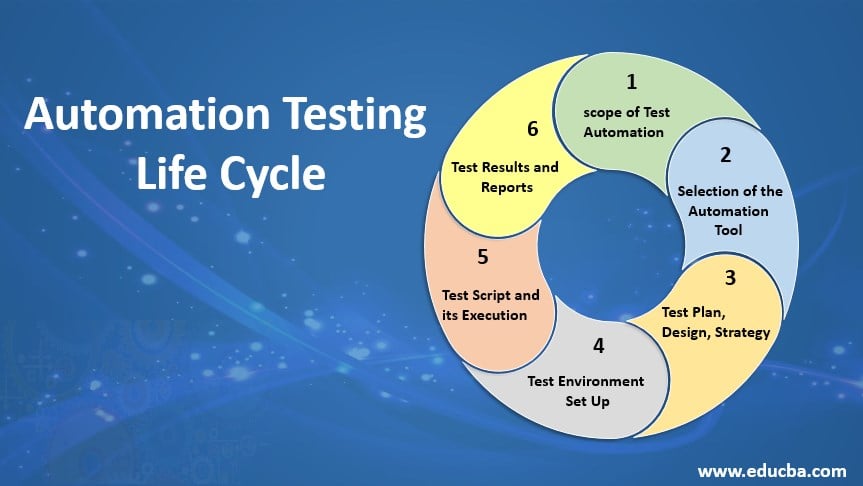Making Certain Success in Automation Checking: Trick Metrics, Challenges, and Solutions Every QA Group Need To Know
In the world of software application high quality assurance, the landscape of automation testing is ever-evolving, demanding a meticulous approach to ensure smooth procedures. The journey to grasping automation testing is paved with subtleties that call for a keen eye for monitoring, analysis, and continuous renovation. As the sector drives ahead, the quest for optimal efficiency in automation testing remains a constant search, advising QA teams to equip themselves with the expertise and methods vital for triumph.
Importance of Trick Metrics
Comprehending the significance of key metrics is crucial for reviewing the performance and effectiveness of automation screening processes. Trick metrics work as quantifiable actions that offer beneficial understandings into numerous elements of the screening process, such as examination protection, examination implementation time, problem thickness, and test instance efficiency. By examining these metrics, QA teams can determine traffic jams, inefficiencies, and locations for renovation within their automation screening framework.
One critical element of essential metrics is their ability to track progress and monitor the overall wellness of the testing procedure (automation testing). They make it possible for stakeholders to make informed choices based upon data-driven insights, which can lead to extra efficient screening techniques and much better source allotment. Furthermore, key metrics can help teams established realistic goals, gauge the success of automation campaigns, and show the ROI of automation testing efforts

Common Challenges Encountered
Obstacles commonly come across in automation screening procedures can dramatically impact the overall efficiency and efficiency of QA groups. Automation testing may not cover all aspects of screening, such as use and customer experience screening, which still call for hand-operated treatment. Overcoming these challenges requires proper preparation, strategic test case option, durable upkeep procedures, appropriate sources, and a clear understanding of the restrictions of automation testing.
Effective Solutions for Challenges
To resolve the challenges encountered in automation testing, applying effective solutions is essential for enhancing the efficiency and productivity of QA groups. One crucial service is to purchase robust training programs for QA groups to ensure they have the essential abilities to properly utilize automation tools. Training can connect knowledge spaces, enhance understanding of automation structures, and improve scripting capabilities, eventually resulting in extra efficient examination development and implementation.
One more vital option is to establish clear interaction networks within the QA team and with other stakeholders, such as designers and project managers. Reliable communication aids in aligning assumptions, sharing progress updates, and immediately attending to concerns or obstructions that might arise during the automation screening process.

Tracking and Analysis Strategies
Implementing reliable monitoring and analysis strategies is essential for making certain the success and efficiency of automation testing procedures. Additionally, examining examination results and metrics supplies beneficial insights into the high quality of the software program being tested and the efficiency of the screening strategy.
One secret strategy in surveillance and analysis is the use of dashboards that combine pertinent metrics and KPIs in a visually available layout. These control panels offer an extensive introduction of examination implementation standing, test protection, flaw fads, and various other critical information. Frequently examining and assessing these control panels can help QA teams make informed decisions, prioritize tasks, and optimize testing efforts.
Additionally, executing automated alerts and notifications based on predefined limits can boost aggressive monitoring and timely treatment. By establishing up alerts for efficiency variances or test failings, teams can deal with concerns without delay and avoid them from escalating. Generally, monitoring and evaluation techniques play a crucial function in making sure the efficiency and success of automation testing initiatives.
Continual Enhancement Techniques
Enhancing the effectiveness of automation screening procedures necessitates the consistent improvement of methods and approaches. Continual enhancement strategies are pivotal for QA groups to adapt to evolving modern technologies and deliver top quality software program products. One essential method to boosting automation testing procedures is to carry out regular evaluations and retrospectives. By evaluating previous testing cycles, groups content can determine bottlenecks, inadequacies, and areas for improvement. Implementing responses loops and including lessons learned right into future testing structures can yield considerable renovations gradually.

Conclusion
Finally, it is important for QA teams to comprehend the key metrics, obstacles, and services in automation screening to ensure success. By meticulously checking and evaluating information, executing reliable services to typical obstacles, and constantly boosting strategies, QA groups can optimize their testing procedures and deliver top reference notch software. Sticking to these practices will eventually cause more effective and reliable automation screening techniques.
By analyzing these metrics, QA teams can determine traffic jams, inefficiencies, and areas for renovation within their automation screening framework.
Additionally, crucial metrics can aid groups set reasonable goals, determine the success of automation campaigns, and show the ROI of automation testing efforts.
Difficulties frequently run into in automation screening procedures can significantly impact the general performance and performance of QA teams. Automation testing might not cover all elements of testing, such as functionality my site and user experience testing, which still call for hands-on intervention.In final thought, it is crucial for QA teams to comprehend the crucial metrics, challenges, and options in automation screening to make certain success.